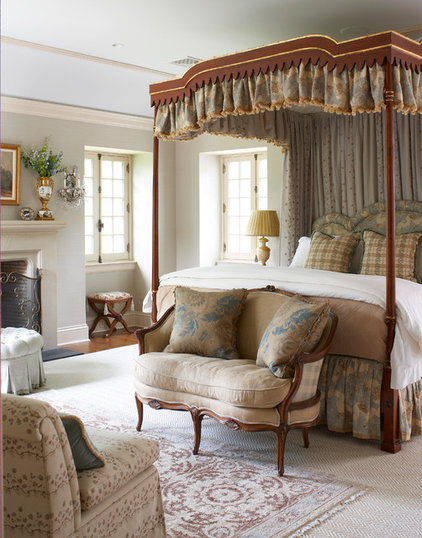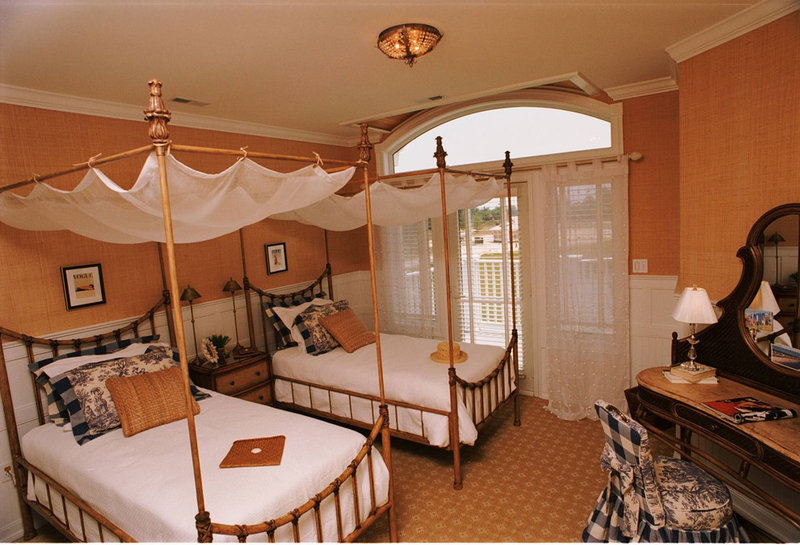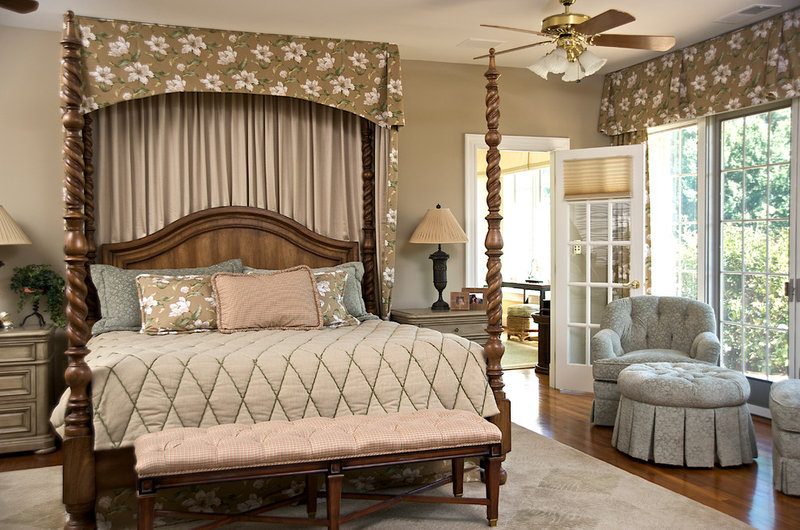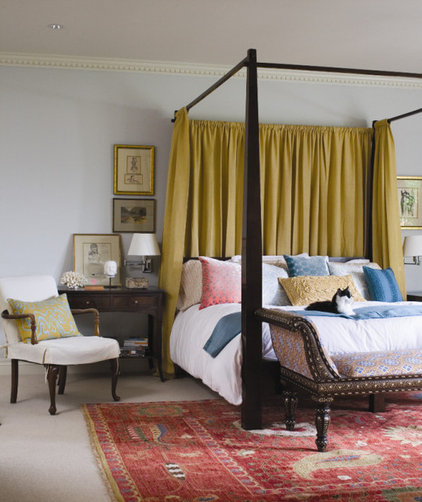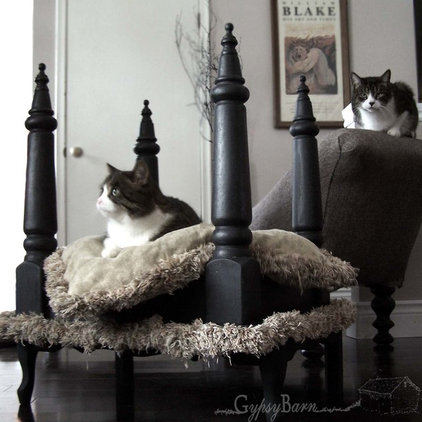9 Ways to Dress a Four-Poster Bed
Nowadays a four-poster bed is still often coveted by many. Let’s look at ways to dress one, from traditional drapery to breezy swags, and even how to have a gorgeously undressed look.
Four-poster beds evolved from canopy beds, also known as tester beds, which were created for purely functional reasons: warmth and privacy. Curtains originally hung from the ceiling, but evolved as a frame was added to the bed to support an overhead canopy, which helped with heat retention. (It’s also said that the canopy stopped critters from falling onto the bed from thatched ceilings.)
Canopies were originally made entirely of wood, often of heavily carved oak. Canopies were often used in conjunction with drapery panels. Later, fabric replaced the wood canopy portion for a lighter look. On some beds the outer canopy frame was kept, while on others it was dropped, but the four tall support posts remained. The sense of enclosure created by this bed style is psychologically comforting and likely why the four-poster bed maintains its popularity.
This elegant bed by Heintzman Sanborn Architecture~Interior Design has creamy silk at the bed’s head, canopy and valance, and operable linen-poly-blend sheer side drapery by Pollack Fabrics.
Something to consider with this design is whether the fabric components can be easily removed or not. Architect Maureen Sanborn says for this bed, they concealed a wood rod between two valances (one on the interior side of the bed and one on the exterior) from which to hang the side drapery fabric. Sanborn says the rod is removable so the fabric valance and drapery can be cleaned. In contrast, some beds have to be completely taken apart to remove the fabric components.
Something else to take into account with a canopy bed is the fabric type and yardage required, which contribute to the cost. Some fabrics, such as sheers and solid-colored linens, don’t have a visual front or back, while a printed or woven fabric does. So any valance or drapery panels visible from both sides will require fabric on both sides if you’re using a printed fabric.
In this case the gathered valance needed fabric on both sides, but the drapery at the head needed fabric only on one side, since it’s against the wall. Rinfret notes this bed required about 15 yards for the blue fabric on the headboard drapery and interior valance, and 10 yards of the floral fabric for the outside of the valance, as well as 15 yards of trim.
Designer Gina Fitzsimons used a valance installed at the ceiling along with drapery at the headboard to create the perception of a partial canopy here. The turned posts of the bed fit up into the valance at the head of the bed.
Draping a piece of fabric over the bed frame was likely the easiest and least expensive way to dress this bed. This approach is casual and uses a wispy, reversible fabric, such as a sheer, gauzy cotton.
A lit à la Polonaise is a four-poster bed frame that’s bent to create an overhead crown. The phrase is French for “Polish bed,” and this style exudes a frilly, romantic air. Attaching fabric at the crown by ties, as shown here, or a pocket allows the fabric to be wrapped in swirling swaths around the supports.
Taking advantage of the rail supports by adding drapery panels is one of the most popular dressing options for four-poster beds. There are different possibilities for the types of drapery panels and where they’re located. Here tab-top drapery panels, two on each side, are pulled toward the posts of the bed and hang freely.
Another option is to install a drapery panel only at the head of the bed to create a drapery headboard. Often another small panel is added to the side rails by the pillows to create a more enclosed, intimate space. Designer Andrea Schumacher says those panels are usually between one-fourth and one-third the width of the canopy panel at the head of the bed. Here lightweight pocket-top drapery panels allow the top rails to run easily through them.
Schumacher says the side panels are double faced, or double sided with fabric, but since the drapery panel at the head is against the wall, it required only the front, or face, fabric.
These pinch-pleat drapery panels have a pretty, more formal look and are less full to emphasize the pleats.
Using drapery panels only at the sides of the bed is another alternative. This contemporary four-poster bed has rails only at the bed’s side and cool mesh panels on them.
Don’t be afraid to mix it up! This bed combines a loose canopy draped over intermediate canopy rails and dreamy semitransparent panels tied to the bedposts.
Going bare is a great option too, allowing the bed frame to shine. Despite not having any drapery or swags, the vertical element created by this bed frame still creates a quasi-enclosed space.

